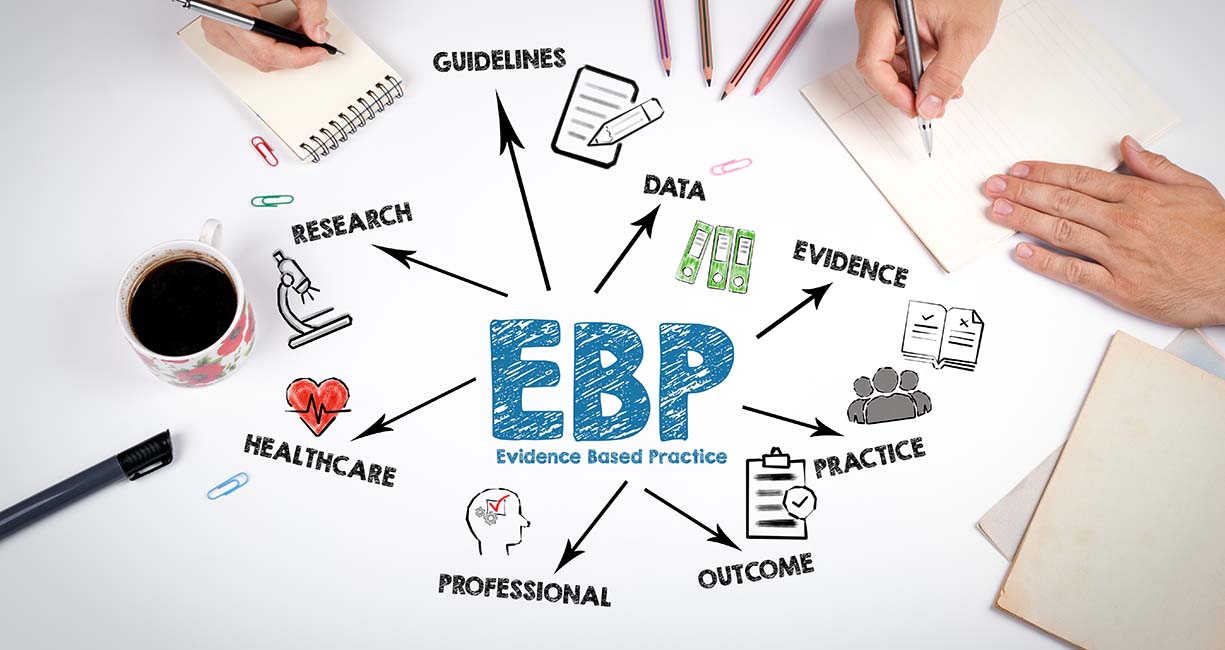Evidence-based chiropractic practices are crucial for improving healthcare quality and patient outcomes. Understanding what it means to be evidence-based involves integrating clinician knowledge, current literature and patient feedback.
While evidence-informed practice considers a wider range of research, evidence-based practice relies on high-quality evidence. Implementing evidence-based care leads to increased credibility, improved patient care and better professional competence. DCs can achieve this by formulating clinical questions, assessing evidence validity, managing patients accordingly and evaluating their performance.
Embracing evidence-based approaches enhances patient care and helps DCs stay abreast of evolving healthcare technologies and techniques.
This article explores why DCs should stress an evidence-based standard in their own practice, illustrates what every DC should know about evidence-based practice and explains what evidence-based practice really means.
Essentially, evidence-based means your practice is following what science has reported to be true. Evidence-based practice (EBP) is typically derived from three specific components, including:
- Clinician knowledge
- The best available evidence in literature at the time
- Patient feedback and communication
Running an EBP combines the purposes of research (conducting research to generate new knowledge) and effectively translating the best evidence available into your treatments, according to Mark Studin, DC, FPSC, FASBE(C), DAAPM.
Evidence-informed vs. evidence-based: What’s the difference?
The terms evidence-informed practice (EIP) and evidence-based practice (EBP) are often used interchangeably, though they refer to different approaches. “Evidence-informed” suggests the goal is to collect evidence to help inform a provider about a particular case, which should go a step further than just reducing bias. It suggests a wider range of research information should be used.
Steve Agocs, DC, explains the difference between these two approaches by examining cupping and flossing in a recent article.
Though cupping therapy exploded into popularity in 2016, the question of “does this practice work?” followed along almost immediately. Strict adherents to EBP, wrote Agocs, would likely “pass over both cupping and flossing as options for patients with neuromusculoskeletal problems. Flossing has no apparent high-quality research for or against it at all, and the systematic reviews of cupping are not favorable.”
On the other hand, Agocs stated an EIP would likely look at more types of evidence than an EBP. “Cupping has been used in a variety of cultures for thousands of years, and flossing, while much newer, is commonly used in athletic circles.” He determined that an evidence-informed practitioner would take this anecdotal evidence and account for it.
Why an EBP promotes practice growth
Just like any other healthcare profession, chiropractic thrives when DCs build the foundation of their practice and treatments on evidence.
Considering evidence-based research alongside their own research, clinical expertise and patient-specific needs is the right approach for credibility and patient benefit.
According to a recent study published in Science Direct, researchers now acknowledge evidence-based healthcare (EBHC) can help DCs:
- Maintain professional competence
- Provide increased quality of care
- Deal with more demand for accountability
- Be more effective and efficient doctors
- Manage rapidly expanding sources of information
- Have knowledge of consensus and guidelines for handling health conditions
- Adhere to the latest evidence-based health guidelines
- Stay aware of new healthcare technologies, strategies and techniques
- Avoid unnecessary or outdated tests or procedures
How to implement evidence-based healthcare in your chiropractic practice
DCs can learn to incorporate evidence-based research into their own practice through a five-component strategy, as defined by a Science Direct report.
The report suggests DCs can turn their own practices into evidence-based practices by:
- Formulating an answerable question to a clinical problem
- Searching medical literature and other sources for information surrounding that question
- Assessing the validity and usefulness of evidence identified
- Managing each patient accordingly
- Evaluating their own performance
- Continuing to research and learn
Final thoughts
For more updates from the chiropractic industry and insights into the importance of running an evidence-based practice, be sure to subscribe to Chiropractic Economics magazine.








